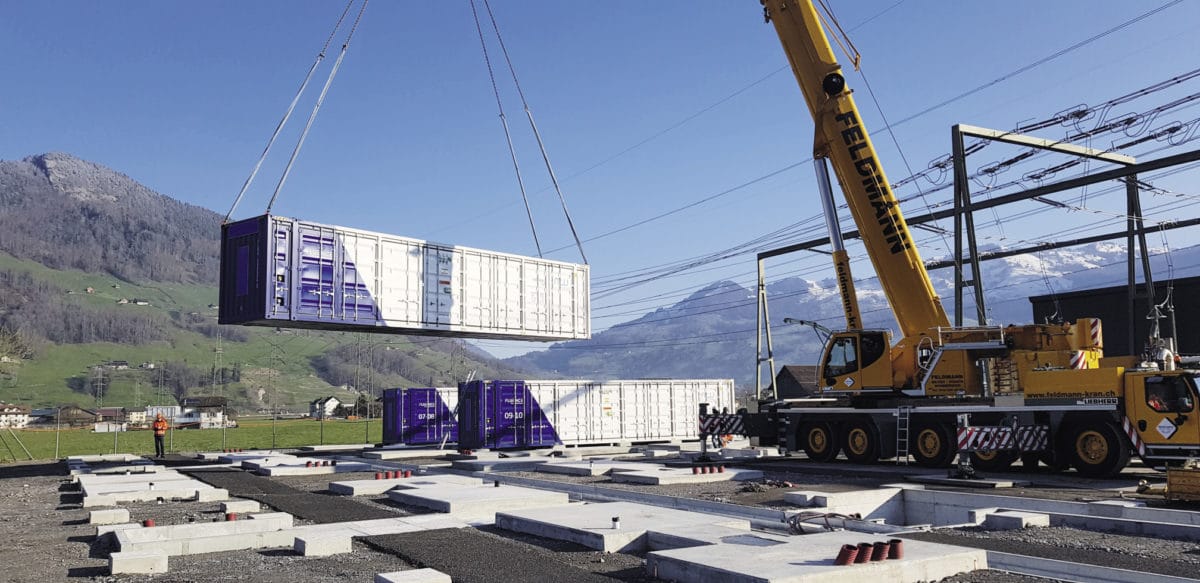From pv magazine International
According to a new report by Wood Mackenzie, front-of-the-meter (FTM) battery storage systems costs in the Asia-Pacific region could decline by more than 30% by 2025, with Australia, China, and South Korea leading the way.
An acceleration in FTM battery storage systems of this magnitude lends added credence to the 7 GW of storage capacity that analysts from Cornwall Insight Australia say is currently in the pipeline. Wood Mackenzie’s report argues that battery price reductions, along with improvements in battery density, contributed to a fall in storage system prices that exceeded expectations in 2020. The latter improvements contributed to a lowering of balance-of-system (BOS) costs and other considerations.
Moreover, a less conspicuous but nonetheless important contributor to the lowering of costs is the streamlining of hardware prices between countries and regions.
“As batteries are expected to represent shrinking portion of all-in system costs, there will be heightened focus on BOS cost reductions moving forward,” said Wood Mackenzie senior analyst Mitalee Gupta. “Manufacturers will continue to innovate and produce BOS components that help reduce labour costs, and installation crews are implementing more efficient labour practices as they gain more experience on job sites. Competitive markets will drive system efficiencies, product standardisation and cheaper batteries as we progress toward 2025.”
Australia is expected to see costs decline by 34% to US$658/kW in 2025 for a 2-hour duration all-in FTM system. At the end of 2020, that price was US$990/kW. Wood Mackenzie foresees the installation of FTM systems accelerating nationwide.
The Asia-Pacific region is the world’s largest manufacturer for lithium-ion batteries, says Gupta. This trend is likely to continue “as the region’s storage industry takes off, every component across the value chain will play a role in bringing down system costs. Fire risks and safety standards, tariffs and trade policies, and safe-guarding the supply chain amidst Covid-19 uncertainty are factors that could make or break the industry.”
Indeed, in recent months we have already witnessed the acceleration of FTM projects in anticipation of continuing price declines. From a 100 MW battery storage facility proposed just this week near Rockhampton, Queensland. Other projects announced just in the first two weeks of 2021 include Origin Energy’s plans for a 700 MW mega-battery in the Hunter region of New South Wales, as well as Neoen’s 500 MW battery planned west of Sydney. Australia’s largest power producer, AGL, also remains on track to add at least 850 MW of new large-scale battery storage to its portfolio by 2024.
Authored By:
This content is protected by copyright and may not be reused. If you want to cooperate with us and would like to reuse some of our content, please contact: editors@pv-magazine.com.








By submitting this form you agree to pv magazine using your data for the purposes of publishing your comment.
Your personal data will only be disclosed or otherwise transmitted to third parties for the purposes of spam filtering or if this is necessary for technical maintenance of the website. Any other transfer to third parties will not take place unless this is justified on the basis of applicable data protection regulations or if pv magazine is legally obliged to do so.
You may revoke this consent at any time with effect for the future, in which case your personal data will be deleted immediately. Otherwise, your data will be deleted if pv magazine has processed your request or the purpose of data storage is fulfilled.
Further information on data privacy can be found in our Data Protection Policy.